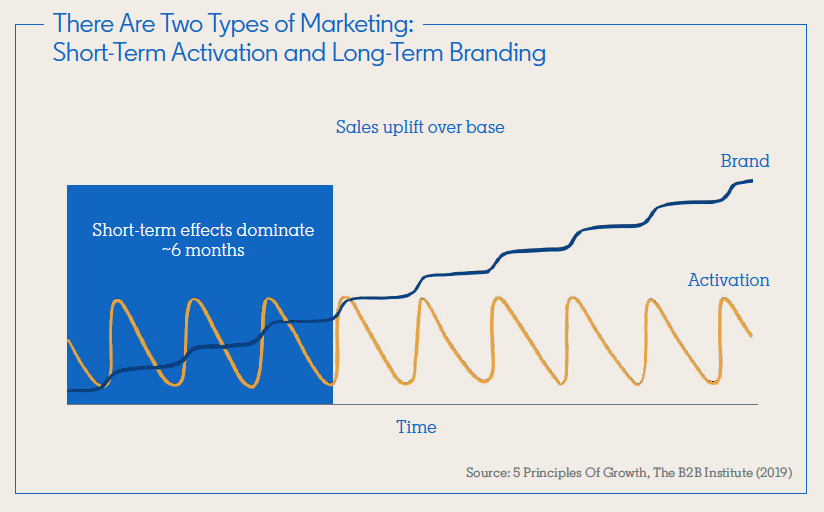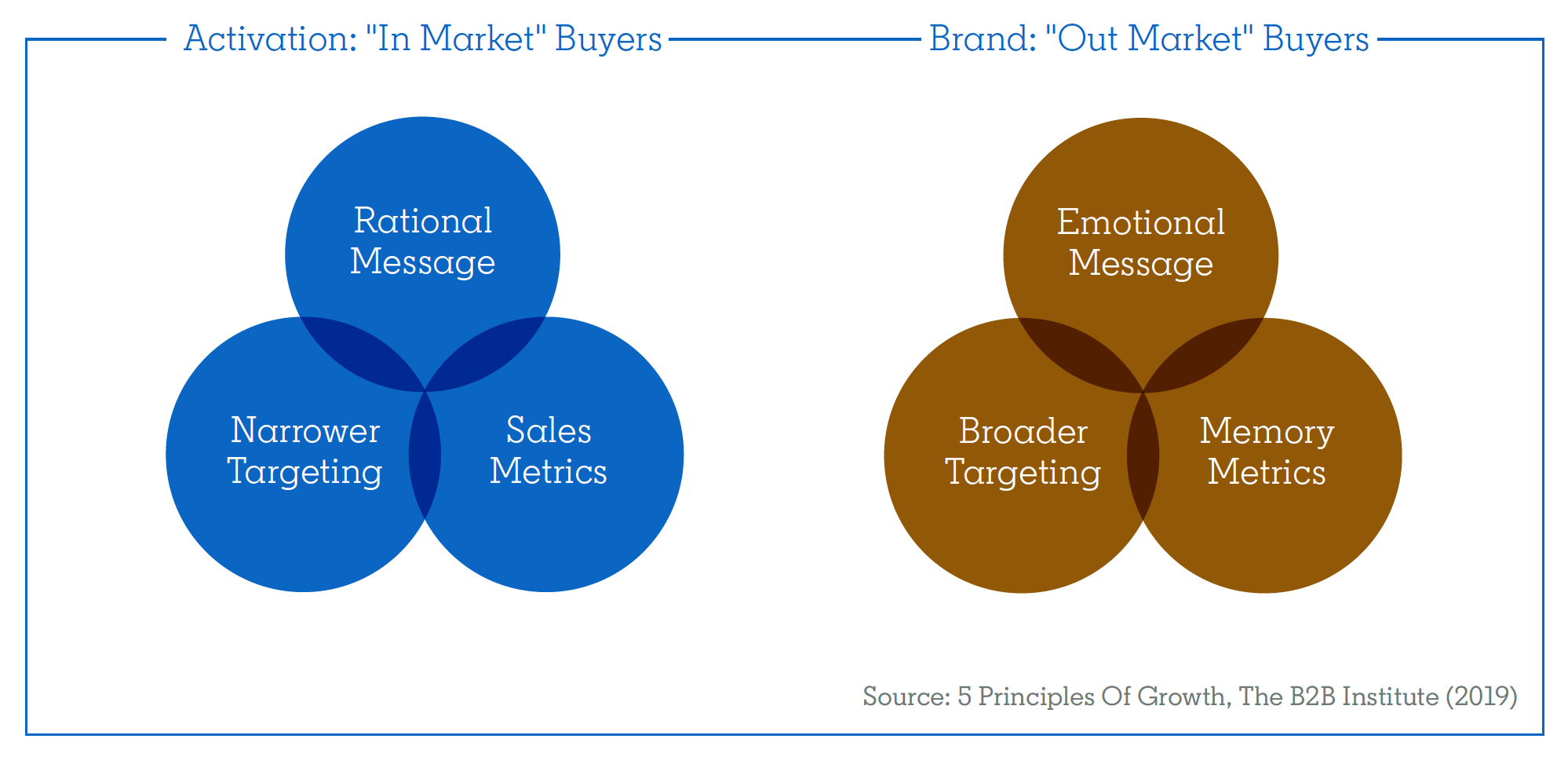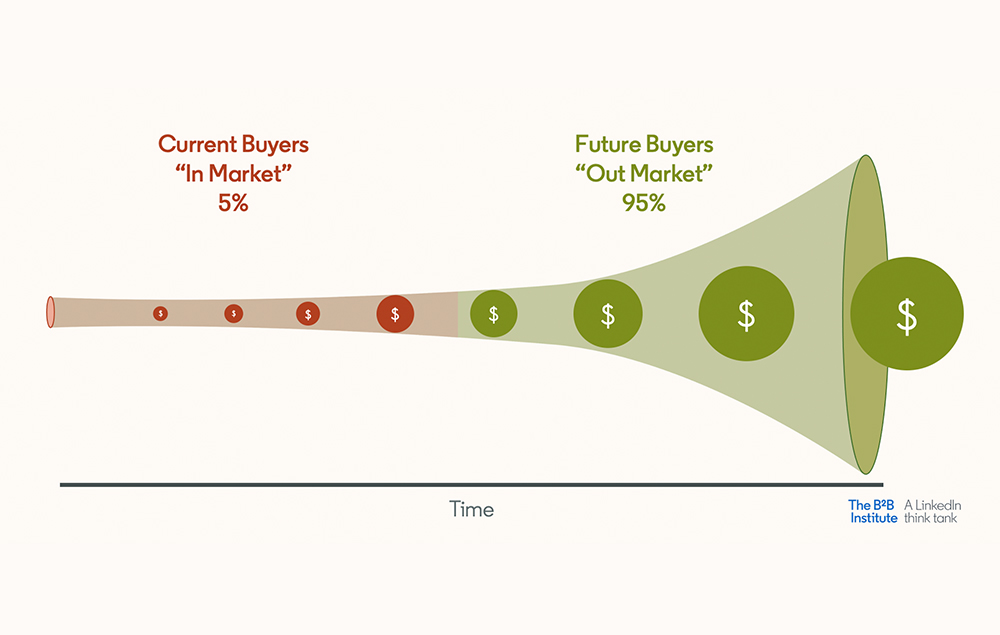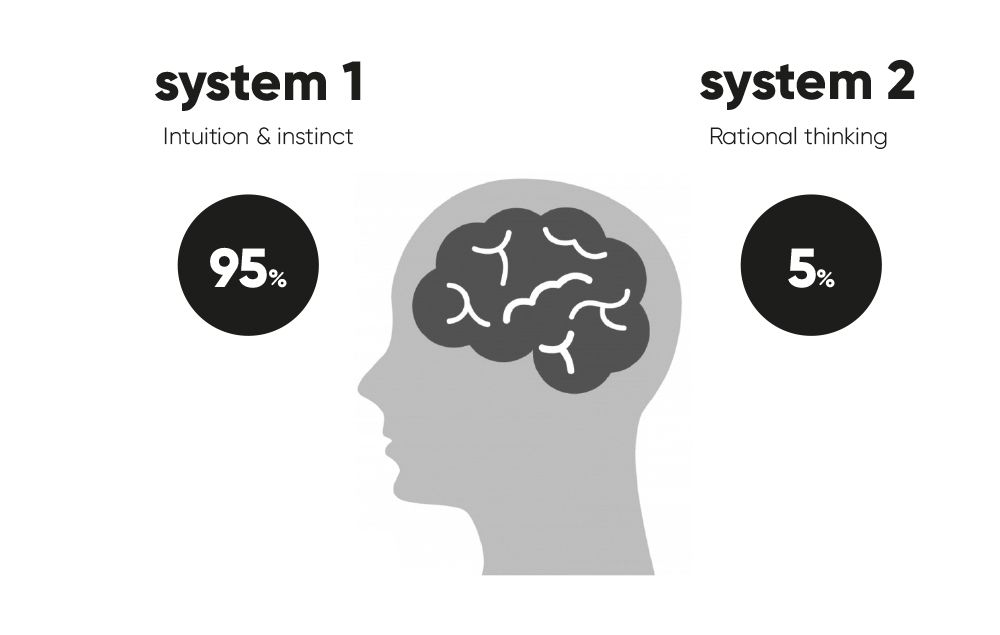Why you're not reaching the majority of potential customers
-
4 minutes
-
January 2, 2024
-
 Dennis Damen
Dennis Damen
Are you using the two types of marketing?
In our article "The Danger of a Short-Term Focus," we discussed the marketing duality presented by researchers Les Binet and Peter Field: sales activation and brand building. Sales activation provides quick results in the short term, but the impact diminishes rapidly. Brand building ensures sustainable long-term growth. It also contributes to short-term results but distinguishes itself by influencing future sales.
In marketing, we usually refer to sales activation as 'lead generation,' but that is not an accurate description. Sales activation doesn't create demand; it only helps companies convert existing demand. Brand building is what genuinely generates demand, both in the long and short term.
Sales Activation vs. Brand Building
By striking the right balance between sales activation and brand building, brands are most effective. For Business to Consumer (B2C) companies, this ratio is 60% brand building and 40% brand activation, while for Business to Business (B2B) companies, it's 46% brand building and 54% brand activation.

Do you approach both in-market and out-of-market customers?
Similar to the two types of marketing, there are two types of customers: 'in-market' and 'out-of-market.' In-market customers are ready to buy your products or services now. Out-of-market customers are not ready to buy today but might be in the future. Successful marketers harvest short-term demand from in-market customers while building long-term demand with out-of-market customers.
Ensure that your sales activation activities focus on short-term in-market customers, while your brand building activities target long-lasting impact with out-of-market customers. This involves differences in targeting, messaging, and metrics. Sales activation requires narrow targeting, a rational message, and sales result metrics. For brand building, you target broadly, use an emotional message, and measure results with memory metrics. More about the importance of creativity and emotion in your brand communications can be found in our article: 'Unlock the Power of Creativity.'
Sales Activation = short term = in-market customers
Brand Building = long term = out-of-market customers

Address your future customers
There's much more money to be made in the long term than in the short term, especially in B2B. Experts from the Ehrenberg-Bass Institute estimate that at any given time, only 5% to 10% of customers in a particular category are in the market for a product or service. The majority of your customers are currently out-of-market. Here's an example from the 'B2B Trends Report' by the LinkedIn B2B Institute, on which this article is based:
"Suppose you sell cloud solutions. There may be relatively few customers in the market for cloud solutions in the next one to three months. There might be only 10 accounts in the market, and activation campaigns can certainly help you win one of those accounts. But in the next one to three years, many more customers will be buying cloud solutions. Today there may be only 10 accounts in the market, but within the next three years, there could be 100 accounts in the market."
If, in the above example, you allocate your entire marketing budget to sales activation, you're only addressing 10% of your potential customers at that moment. With brand building, you can reach the remaining 90% of potential customers. Brand building is 'sticky'; it creates lasting memory structures in the minds of future buyers, memories likely to be recalled when out-of-market buyers become in-market buyers.
Ensure long-term growth
You might think you can never convince your organization to invest heavily in deals that you'll only close in one or three years. However, good CFOs understand that companies are not valued based on current cash flows but on future cash flows. According to some estimates, 80% of the value of your company's stocks is based on sales over 10+ years in the future. Smart money on Wall Street cares about sustainable long-term growth, and you should too.
Sales Activation = in-market customers = current cash flows
Brand Building = out-of-market customers = future cash flows
To help convey the benefits of long-term growth to internal stakeholders, Peter Weinberg and Jon Lombardo of the LinkedIn B2B Institute have developed a concept in the 'B2B Trends Report' called 'The Cash Flow Funnel.' The Cash Flow Funnel serves as a counterpart to one of the most popular marketing models: top-of-funnel and bottom-of-funnel. By turning the funnel on its side and considering growth over time, you can better differentiate between in-market customers and out-of-market customers.

Find the right balance for your organization
More and more companies are realizing that they have invested too much in short-term sales activation activities, neglecting a large portion of their potential customers. Find the right balance for yourself between brand building and sales activation and the approach to in-market and out-of-market customers. This way, you achieve success in both the short and long term.
Would you like to discuss your marketing approach?
Would you like to discuss your marketing approach and find the right balance between brand building and sales activation? Feel free to contact us for a no-obligation advisory meeting.
Relevant insights
we work for
















